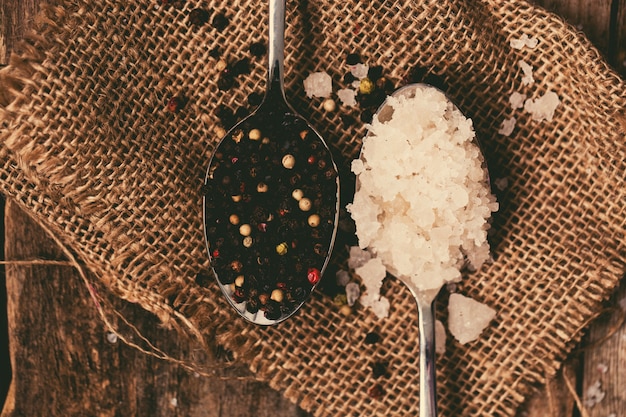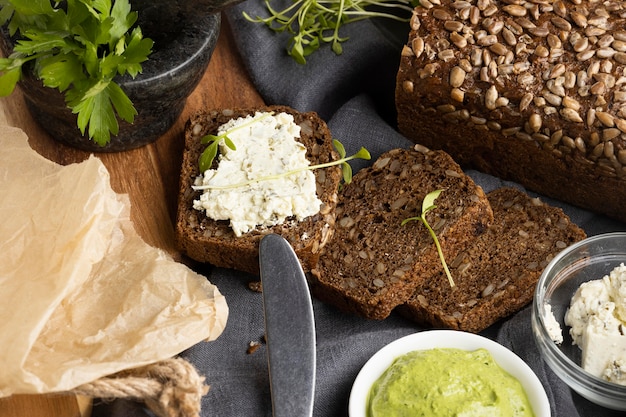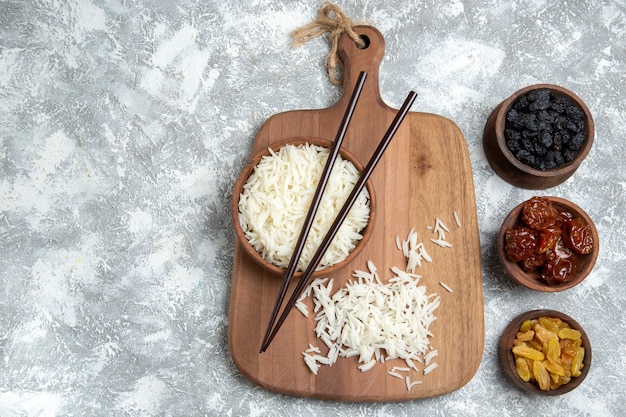The first time I saw wild rice on a menu, it was at a fancy restaurant in London. I remember thinking, "What exactly is this exotic, expensive-sounding thing?" It had this aura of mystique around it, like something only the most sophisticated palates could appreciate. It wasn't until I met my friend Steve, who lives up in the Lake District, that I discovered the real story behind wild rice. Steve has this beautiful little lake on his property, and guess what? It's teeming with wild rice! Now, I'm no stranger to cooking, but harvesting my own food? That was a whole new ball game.
This article isn't just a recipe, it's an adventure, a journey from harvest to table. It's about the thrill of discovering a new food, the satisfaction of growing your own, and the unique flavour of wild rice that's unlike anything else. So, grab a cuppa and settle in, because this is the story of how I fell in love with wild rice.
(Part 1) The Harvest

A Lake Full of Surprises
I remember that first trip up to the Lake District like it was yesterday. The air was crisp, the sky was a brilliant blue, and the lake was a mirror reflecting the mountains. It was so peaceful, you could hear the silence. Steve met me with a warm smile and a mug of steaming hot tea, and we talked about the wild rice. He told me that the harvesting process was a bit like fishing, but instead of a hook, you used a long pole with a net. He showed me how to gently scoop up the rice without damaging the plants. It took some getting used to, but after a few tries, I was getting the hang of it. It was like a dance, a ballet of gentle movements and precise timing. I found myself truly enjoying the process, the sun on my face, the fresh air, and the feeling of being in harmony with nature.
The Traditional Way
Steve told me that the traditional way of harvesting wild rice was with a "knock-and-gather" method. He explained that they used long poles with a paddle at the end to knock the rice heads into the water. Then, they'd use a net to scoop it up. "It's a lot of work," he said, "but it's a way of life, a connection to the land." I felt a sense of history, of being part of something much bigger than myself. The lake was more than just a body of water; it was a source of life, a place where nature had created something truly special.
The Joys and Challenges
The harvesting was a mix of joy and frustration. Sometimes I'd get a good handful of rice, and other times, the net would come up empty. There were a few close calls with grumpy bullfrogs who didn't seem to appreciate my intrusion into their domain. But I was determined to fill my cooler bag with enough wild rice for a delicious feast. As the sun started to set, painting the sky with fiery hues of orange and red, we packed up our gear and headed back to Steve's cabin. I couldn't wait to see what culinary wonders awaited.
(Part 2) The Prep

From Lake to Kitchen
Once we were back at the cabin, we spread the wild rice out on a clean sheet to dry. This gave us a chance to examine it up close. I was surprised to see that the rice was encased in a sort of husk. Steve explained that we had to remove these husks before cooking. He showed me the traditional method, which involved gently rubbing the husks between my hands until they came off. It took a little time and a bit of elbow grease, but it was a meditative process. It felt like a way of honouring the rice, of revealing its inner beauty. As I worked, I noticed a slight, almost sweet scent coming from the rice. It was earthy, but with a hint of something more delicate, like a whisper of forest floor and sunlight.
The Rinse and Soak
Next, we rinsed the rice thoroughly to remove any remaining debris. Steve then gave me a quick lesson on how to cook wild rice. He explained that it was crucial to soak the rice for a few hours beforehand. This helps the rice absorb the water and become more tender. "It's like giving the rice a bath before its big night out," he joked. We filled a bowl with cold water and added the rice, then popped it in the fridge. As the rice soaked, my mind was buzzing with culinary possibilities. What kind of dishes could I create with this unique ingredient?
(Part 3) The Cooking

The Magic of Wild Rice
After a few hours, the wild rice was ready to cook. I filled a large pot with water and added a pinch of salt. Then, I carefully poured in the rice and brought the water to a boil. Steve had told me that wild rice takes longer to cook than regular rice, and you have to keep a close eye on it. So, I reduced the heat to a simmer, covered the pot, and let it cook for about 45 minutes. As the rice cooked, the aroma filled the cabin. It was earthy, nutty, and slightly sweet, like a symphony of forest scents. I couldn't wait to taste it. I knew this was going to be special.
The Taste Test
When the rice was cooked, I carefully drained it and gave it a taste. It was like nothing I had ever experienced before. The flavour was rich and complex, with a subtle sweetness and a hint of nuttiness. It was so satisfying, so grounding. I knew then that I had discovered something truly special, a taste of the wild that was both familiar and exotic. This wasn't just rice; it was a gift from nature, a culinary masterpiece.
(Part 4) The Menu
A Feast of Wild Flavors
Now, I had to decide what to do with this wild rice treasure. Steve had mentioned a few traditional recipes, like wild rice soup and wild rice salad. But I wanted to explore my own culinary creativity, to put my own spin on these dishes. I decided to start with a simple wild rice salad, using toasted pecans, cranberries, and a light vinaigrette. The contrast of textures and flavours was delicious, the sweetness of the cranberries balancing the earthiness of the rice. I also tried a creamy wild rice soup with mushrooms, onions, and a touch of nutmeg. It was like a comforting hug in a bowl, the wild rice adding a unique depth and complexity to the familiar flavours.
Recipes to Inspire
Here are a couple of my favourite wild rice recipes that I've been enjoying lately:
Wild Rice Salad with Toasted Pecans and Cranberries
- 1 cup cooked wild rice
- 1/2 cup toasted pecans
- 1/4 cup dried cranberries
- 1/4 cup chopped red onion
- 1/4 cup chopped celery
- 1/4 cup chopped parsley
- Vinaigrette (made with olive oil, lemon juice, salt, and pepper)
Creamy Wild Rice Soup with Mushrooms and Onions
- 1 tablespoon olive oil
- 1 onion, chopped
- 2 cloves garlic, minced
- 1 pound mushrooms, sliced
- 4 cups chicken broth
- 1 cup cooked wild rice
- 1/2 cup heavy cream
- Salt and pepper to taste
- Pinch of nutmeg (optional)
(Part 5) The First Bite
A culinary journey
That first bite of the wild rice salad was pure magic. The flavour was so unexpected, so captivating. It was earthy, nutty, and subtly sweet, with the cranberries adding a pop of tartness. The pecans added a satisfying crunch. It was more than just a salad; it was a symphony of tastes and textures. The soup was equally delicious. The creaminess of the broth, the earthy mushrooms, and the nutty wild rice all blended together perfectly. It was like a warm embrace, a culinary comfort food with a twist. With each bite, I felt a sense of connection to nature, a appreciation for the simple things in life.
(Part 6) Wild Rice: More Than Just a Food
A Celebration of Nature
Wild rice is more than just a delicious ingredient. It's a symbol of nature's bounty, a reminder of the importance of sustainable living. It grows wild in lakes and wetlands, without the need for pesticides or fertilizers. It's a natural, healthy food that's good for the environment and good for you. Every time I eat wild rice, I feel a sense of gratitude for the natural world and its incredible gifts. It's a celebration of life, a reminder of the simple pleasures that we often take for granted.
(Part 7) Wild Rice: A Sustainable Choice
A Taste of Sustainability
In a world where we're constantly bombarded with information about climate change and environmental degradation, it's more important than ever to make conscious choices about the food we eat. Wild rice is a great example of a sustainable food option. It's a natural food that grows without the need for harmful chemicals or intensive farming practices. By choosing wild rice, we're not just nourishing our bodies, we're also supporting a healthier planet. It's a small step, but it's a step in the right direction.
(Part 8) A Journey of Discovery
The Adventure Continues
My journey with wild rice is far from over. I'm already planning my next trip up to Steve's lake, eager to harvest more of this incredible grain. I'm also experimenting with different recipes, trying to find new and exciting ways to incorporate wild rice into my cooking. Maybe I'll even try to grow my own one day. The possibilities are endless, and I'm excited to see what culinary adventures await. This isn't just about a food; it's about a way of life, a connection to nature, and a commitment to sustainable living. It's a journey that's just beginning, and I'm thrilled to be a part of it.
FAQs
1. Is wild rice really rice?
While it's called wild rice, it's not actually a true rice. It's a different species of aquatic grass, more closely related to grains like oats and barley. However, it has a distinctly nutty and earthy flavour that makes it a delightful alternative to traditional rice.
2. Where can I find wild rice?
You can find wild rice in most grocery stores, typically in the bulk foods section or with other specialty grains. Look for packages labelled "wild rice" to ensure you're getting the real deal. Health food stores and specialty markets may also carry a wider variety of wild rice.
3. Can I harvest my own wild rice?
While it's possible to harvest wild rice in some areas, it's important to check local regulations and guidelines before doing so. Wild rice harvesting might be restricted or prohibited in certain regions to protect the environment and ensure sustainability. Always respect local laws and regulations to preserve this natural resource.
4. How do I store wild rice?
Once cooked, store wild rice in an airtight container in the refrigerator for up to 3 days. You can also freeze cooked wild rice for longer storage. Place it in a freezer-safe container or bag and freeze for up to 3 months. Defrost the rice overnight in the refrigerator before using it.
5. What are some other ways to cook wild rice?
Wild rice is incredibly versatile and can be incorporated into many dishes beyond salad and soup. Try adding it to stir-fries, stuffing, casseroles, or even using it as a base for a vegetarian burger. Experiment with different flavors and textures to find your favourite way to enjoy this unique grain.
Everyone is watching

Prime Rib Roast Cooking Time Chart: Per Pound Guide
Cooking TipsPrime rib roast. Just the name conjures images of lavish dinners, crackling fires, and hearty laughter. It’s ...

How Long to Bake Potatoes in the Oven (Perfect Every Time)
Cooking TipsBaked potatoes are a staple in my kitchen. They're incredibly versatile, delicious, and surprisingly easy to m...

Perfect Rice Every Time: The Ultimate Guide to Cooking Rice
Cooking TipsAs a self-proclaimed foodie, I've always been a bit obsessed with rice. It's the foundation of countless cuisi...

The Ultimate Guide to Cooking Asparagus: Tips, Techniques, and Recipes
Cooking TipsAsparagus. The mere mention of this spring delicacy conjures up images of vibrant green spears, crisp and burs...

Ultimate Guide to Cooking the Perfect Thanksgiving Turkey
Cooking TipsThanksgiving. Just the word conjures up images of overflowing tables laden with delicious food, the scent of r...
